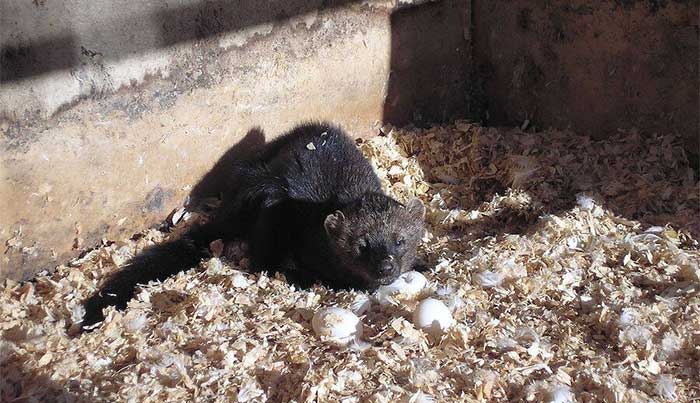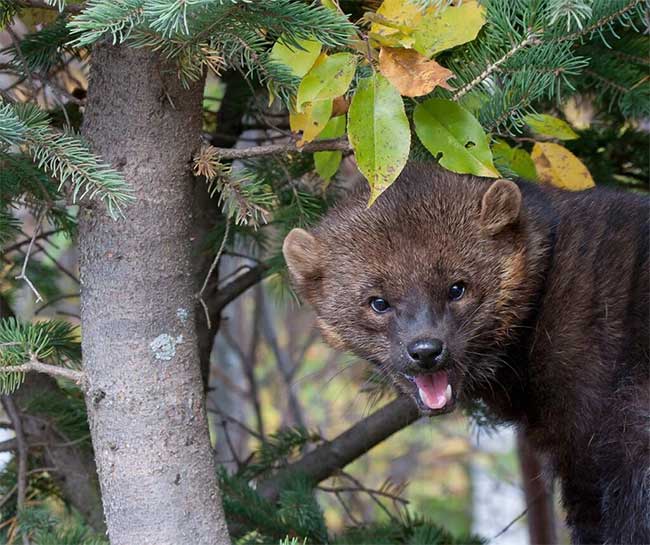“Fisher cat” is not a cat but a type of marten. They have the ability to hunt various types of animals and are one of the strongest predators in North America.
Found in forests across Canada and the northern United States, the Pekan (also known as the fisher cat) is a unique and remarkable species. As a member of the marten family, this creature is known for being elusive and shy. Those who have encountered them often describe them as gentle and innocent animals.
However, beneath their seemingly charming exterior lies the heart of a true predator. Despite their name, fisher cats do not catch fish and are not actually cats. Instead, these animals primarily hunt rodents, birds, amphibians, small reptiles, and insects. They are also one of the few mammals brave enough to pursue porcupines. Additionally, very few animals in their habitat pose a threat to them, apart from humans.

A Unique Animal with a Misleading Name
With a length of up to 40 inches (over 1 meter), the fisher cat has a slender body with a long tail (making up about one-third of its total body length).
According to Mass Audubon, this animal can weigh nearly 10 kg, has four short but agile legs with partially retractable claws, allowing it to quickly climb trees and jump up to more than 2 meters high.
The fisher cat also boasts a sleek coat that varies in color from gray-brown to dark brown and black. About 100 years ago, the fur of this species was highly valued in the fur trade, leading to near extinction in some parts of its range in North America.

The fisher cat has a sleek and colorful fur coat.
Fortunately for the fisher cat, it is no longer on the brink of extinction. According to Live Science, successful reintroduction efforts and habitat restoration have ensured the survival of this species in Canada and the United States (especially in the Northeast and Northwest). Moreover, animal fur is no longer in high demand in modern times, resulting in less hunting.
While this is great news for the fisher cat and environmentalists, a less appealing aspect is that if their populations grow too quickly and come close to human settlements, your pet dogs and cats could become their dinner.

A fisher cat captured by a camera.
A Gluttonous Creature
Despite their relatively small size, fisher cats are very gluttonous. This carnivorous creature hunts for rabbits, squirrels, mice, shrews, birds, amphibians, and insects. They also eat nuts and fruits when animal prey is scarce.
Notably, fisher cats enjoy eating porcupines, a species known for being hard to kill. To do this, the predator attacks the vulnerable parts of the porcupine: its face and belly. Once the porcupine is injured, the fisher cat will kill it and eat the animal from the head, neck, or underside to avoid being poked by the quills.

Fisher cats love to eat porcupines, which are notoriously difficult to kill.
However, even if a fisher cat gets poked by porcupine quills—or accidentally swallows quills while eating—it seems to suffer little harm. They can withstand infections from the quills, which could be fatal to most other animals.
Thanks to their impressive hunting skills, terrifying rumors about this animal have circulated, with many stories claiming that they prey on small children.
However, according to Live Science, these rumors are simply inaccurate. Wildlife ecologist Michael Joyce has stated that he has never recorded any instances of fisher cats attacking humans.
Fisher cats are known to hunt domestic cats when they wander outside, and some particular individuals have even considered pet dogs as potential prey.

Fisher cats are extremely gluttonous.
According to The New York Times, a woman named Kerry Beaudry recounted an incident where a fisher cat attacked her German Shepherd dog in Rhode Island in 2007. The fisher cat bit the dog’s neck and gnawed at its face until Beaudry’s husband chased it away with a broom.
Unfortunately, what happened to Beaudry’s poor dog is not an isolated case. In recent years, fisher cats have gained notoriety for attacking pets and livestock, particularly in the Northeastern United States.
Furthermore, fisher cats can kill multiple animals at once (sometimes to satisfy their hunting instinct) in a small space, which can be troublesome if they find their way into a chicken coop.
Perhaps unsurprisingly, this has led to frustration and concern among many pet owners and farmers in areas where fisher cats roam.

Fisher cats can kill multiple animals at once in a small space.
What Does the Future Hold for Them?
Although fisher cats may have been at risk of disappearing decades ago, that is far from the case today. Conservation efforts and reforestation have ensured that this animal will thrive in North America in the near future.
Because fisher cats have few enemies other than humans, they have little to fear in the wild—even when encountering larger animals. In fact, according to National Geographic, fisher cats can successfully take down animals many times their size, including Canada lynx. It is believed that they can achieve this by delivering a fatal bite to the lynx’s neck or head.

Fisher cats can successfully take down animals many times their size.
Scott McLellan, a wildlife biologist from inland Maine, explains: “There are no size limits to the animals that fisher cats will attack. They are very opportunistic animals; if provoked, they will be ready to fight to the death.”
While fisher cats can be a nuisance to farmers and ranchers, they also play an important role in the ecosystem, particularly in controlling rats and other harmful rodents.
Overall, humans will need to learn how to coexist with fisher cats rather than oppose them.


















































